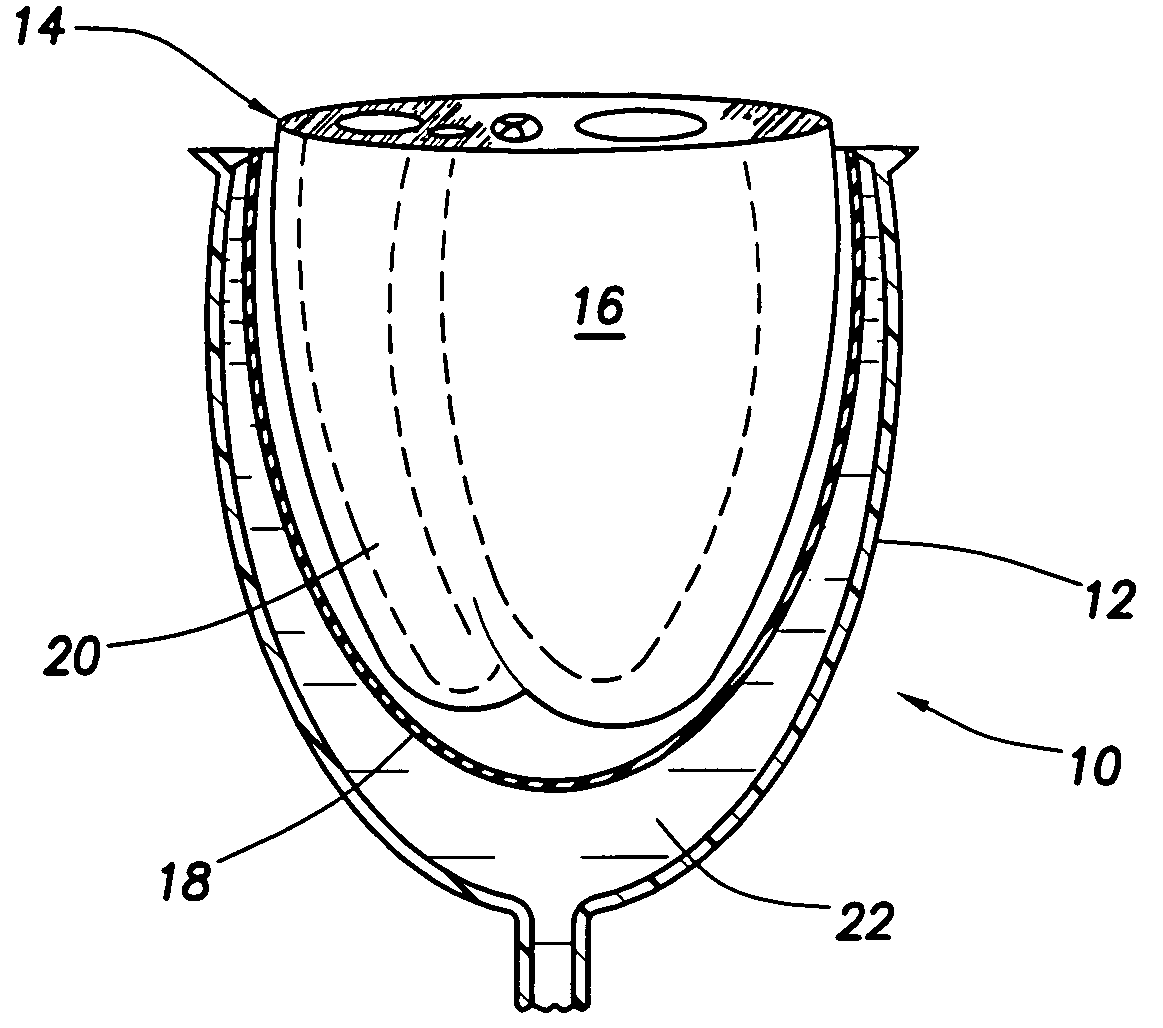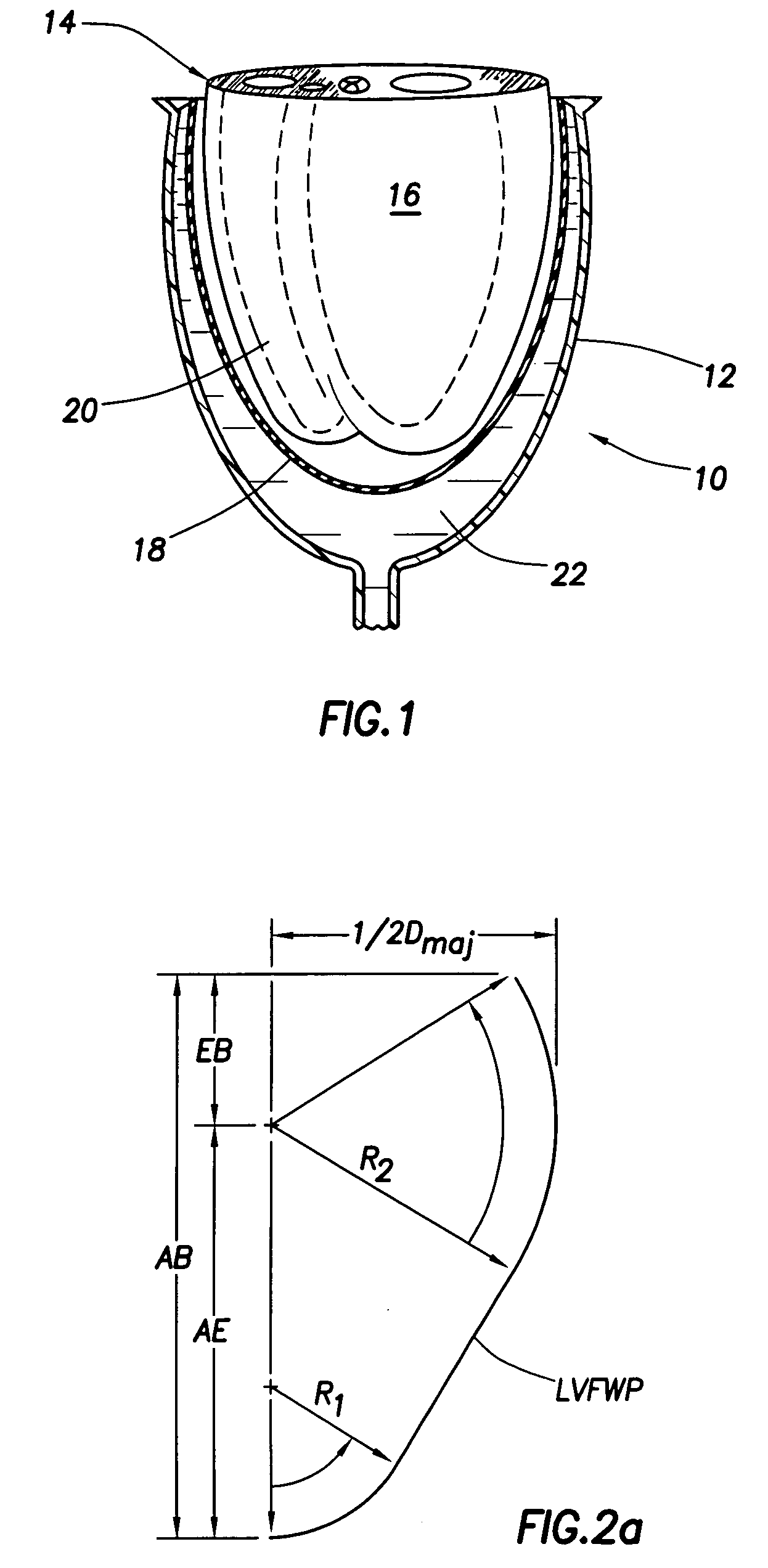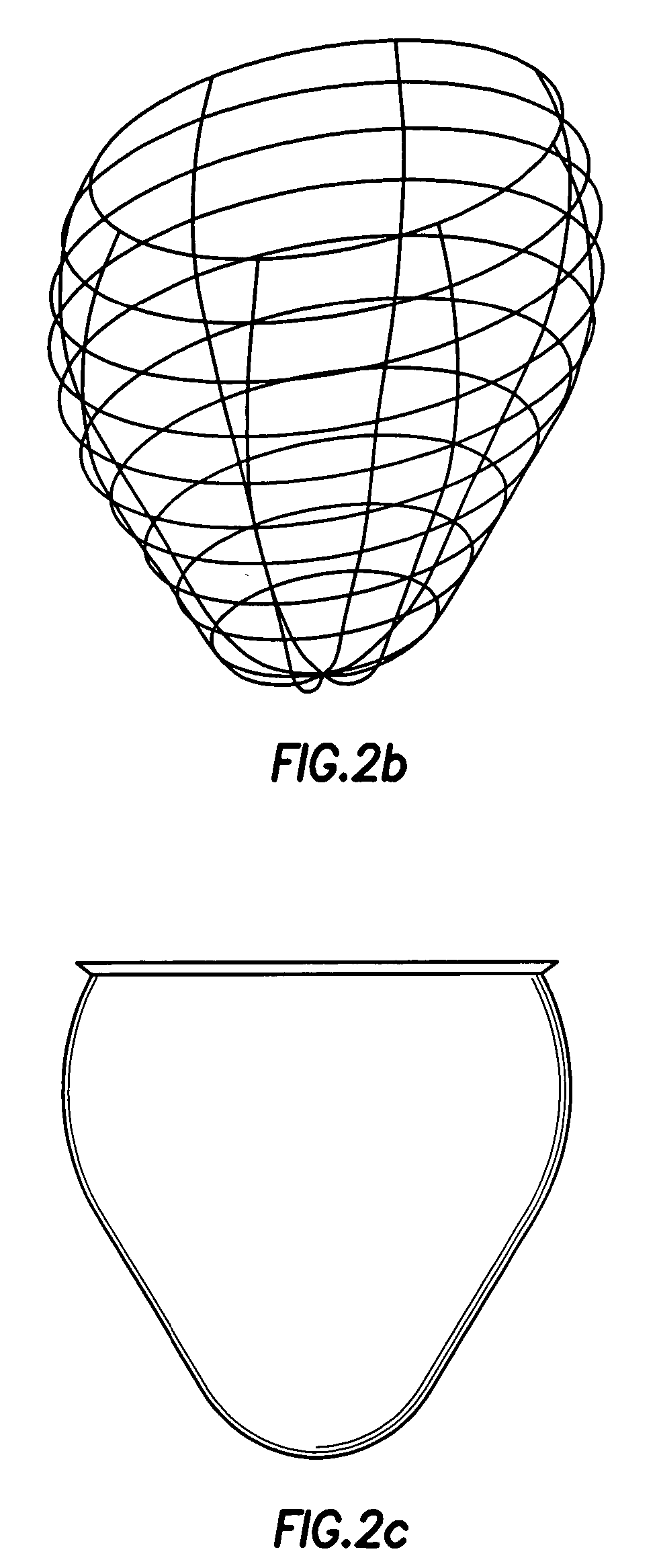Device for proactive modulation of cardiac strain patterns
a technology of proactive modulation and cardiac strain, which is applied in the field of direct cardiac compression devices, can solve the problems of known attempts to proactively modulate, dccds do not proactively modulate, and the supply of donor hearts is not adequate to meet demand, so as to reduce the apoptosis of the myocardium
- Summary
- Abstract
- Description
- Claims
- Application Information
AI Technical Summary
Benefits of technology
Problems solved by technology
Method used
Image
Examples
example 1
Formation of a Prototype DCCD
A prototype of one embodiment of the present invention was built to fit a 110 kg bovine into which the device was implanted for an acute period (2 hours) to test the valve plane attachment and the preservation of cardiac curvature during assist with varying degrees of heart failure which was induced pharmacologically with high doses of a beta-blocker. Because the period of implantation was brief, biocompatible materials were not utilized; rather inexpensive and readily available materials were used. The methods of construction and sizing are directly applicable to devices for use in humans or other animals.
The size of this device was determined by 5 cardiac measurements—all of which can be made via a cardiac ultrasound. The major diameter (Dmaj) and minor diameter (Dmin) were obtained from a short axis view in the equatorial region. From a long axis view one can obtain: AB-distance from apex to base; EB-distance from equator (fattest part) to base; a...
example 2
Attachment of a DCCD to the Heart
Various methods of attaching the device to the heart have been tested using the fixed heart that was measured in order to determine the size of the device. As shown in FIG. 3, the heart was sewn to the device with running sutures that go completely around the heart. Although this is more laborious than a vacuum attachment method, other DCCDs require the device boundaries to be sutured to the heart and so a similar approach was tried here.
For animal models of CHF, the attachment in FIG. 3 is likely to be acceptable. Yet in CHF patients, such a method of attachment would be prone to surgical complications because there is too much pericardial fat and because of the need to sew near important vascular structures (e.g. left and right coronary arteries, great cardiac vein and coronary sinus). Moreover, the coronary sinus and right coronary arteries are on the posterior side of the heart, an area with limited exposure in-vivo.
To reduce the chances of...
example 3
Use of a DCCD
Experiments were performed using a device with an outer shell similar to that of the Hewson patent containing a plexiglass window in the outer shell to allow observation of the cardiac curvatures with a CCD camera while the device was in operation. The Hewson device was designed to be held in place by contact forces between the rim and the heart, but even active hearts are soft tissues that can undergo high shear and squeeze out of the device. Specifically, the myocardium of hearts are organized into sheets that allow contracting myocytes to rearrange and shear to attain high radial motions.
Thus when the DCCD similar to the Hewson device was implanted in a young bovine, even with a normal contractility, the heart readily escaped the device. Accordingly, the Hewson device, as described in the Herson patent, appears to be inoperable and required serious modification of the device and / or its means of attachment in order to develop an operable device.
Specifically, the...
PUM
 Login to View More
Login to View More Abstract
Description
Claims
Application Information
 Login to View More
Login to View More - R&D
- Intellectual Property
- Life Sciences
- Materials
- Tech Scout
- Unparalleled Data Quality
- Higher Quality Content
- 60% Fewer Hallucinations
Browse by: Latest US Patents, China's latest patents, Technical Efficacy Thesaurus, Application Domain, Technology Topic, Popular Technical Reports.
© 2025 PatSnap. All rights reserved.Legal|Privacy policy|Modern Slavery Act Transparency Statement|Sitemap|About US| Contact US: help@patsnap.com



